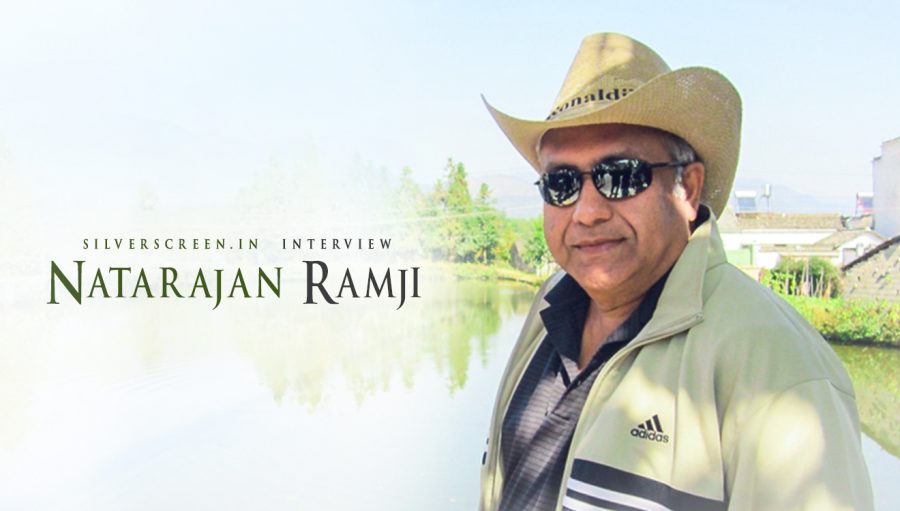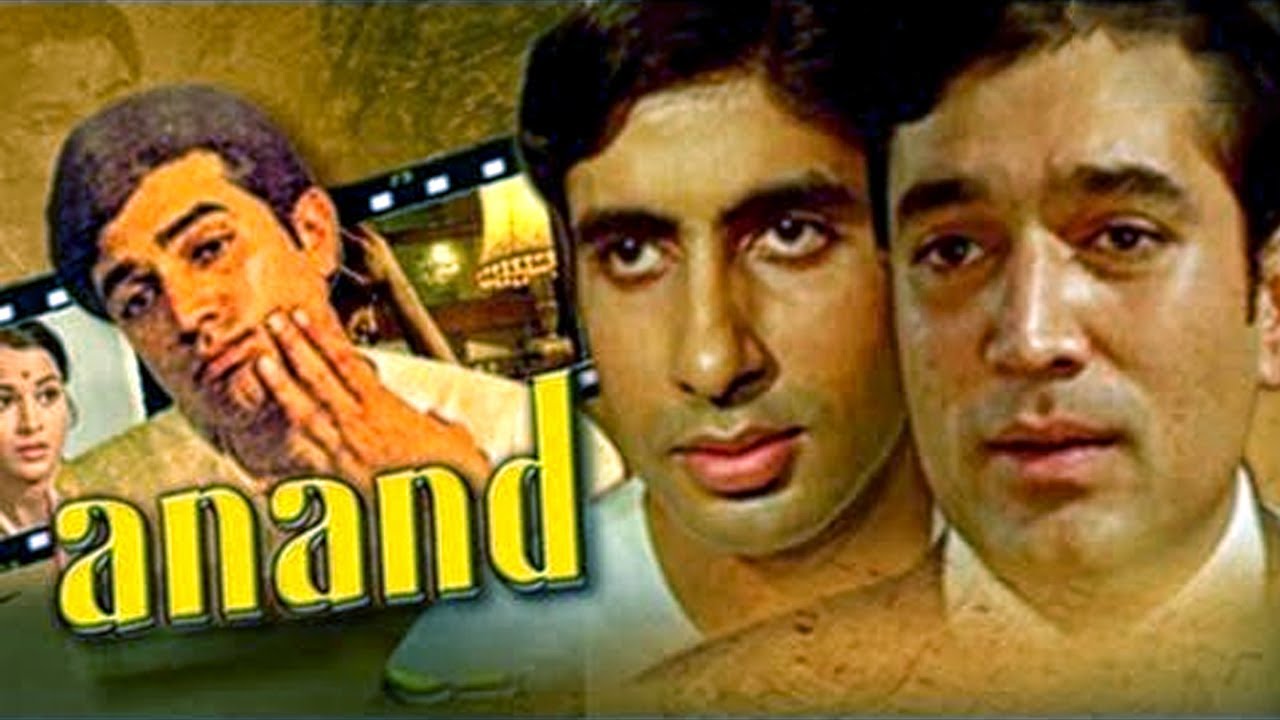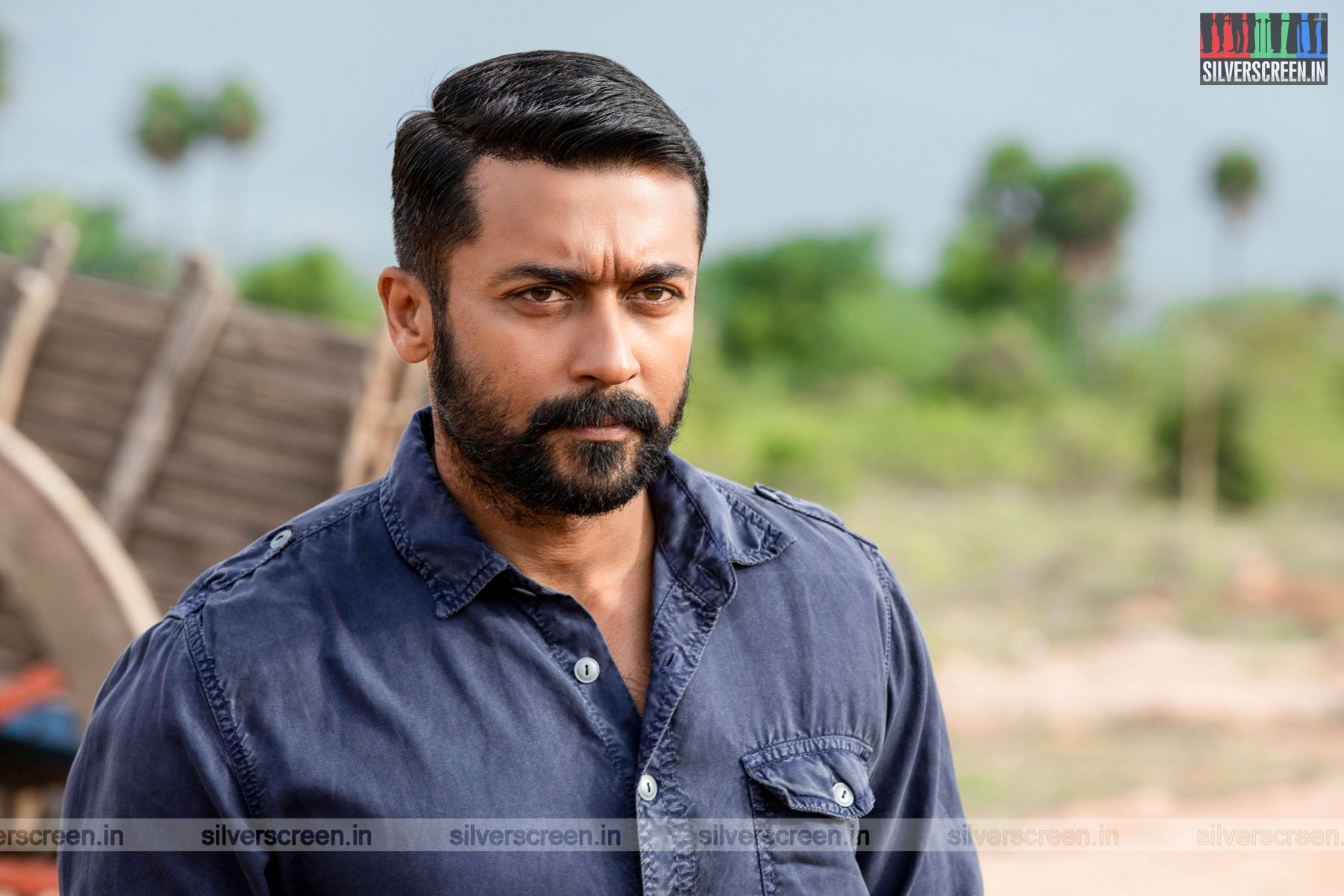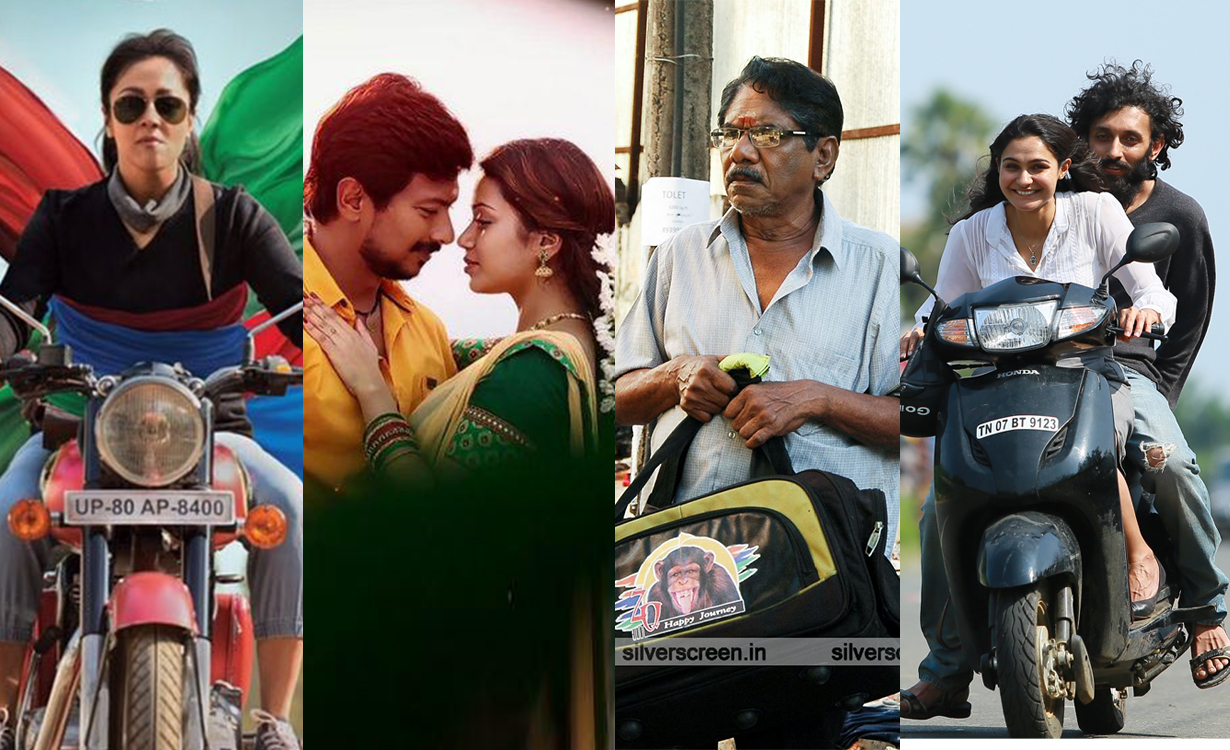‘Location Guru’ Natarajan Ramji says he has the best job in the world. He travels around the world looking for exotic places to shoot. Sometimes, directors change their scripts to accommodate Ramji’s suggestions.
The ethereal black sand beach where Shah Rukh Khan and Kajol sent flying all the ‘gerua‘ in Dilwale. The outlandish bridge that slices through an emerald blue lake, surrounded by mighty waterfalls, where Chiranjeevi and Kajal Agarwal dance away in a song sequence in Khaidi No 150. The bright red algae beach that set the backdrop for an intense, turbulent romantic affair between Vikram and Amy Jackson in Shankar’s I.
The credit for bringing these exotic places to the Indian screen rests with Natarajan Ramji, the Mylapore man who is the chairman of Travel Masters India Private Limited.
Widely known as ‘Location Guru’, Ramji is a veteran line-producer and a foreign location scout, with an experience of over three decades. He facilitates film shootings in picturesque locations abroad, and organises services ranging from accommodation of the crew to securing the required government permissions, and arranging filming equipment, local actors and stunt men.
As I am writing this interview, Ramji is in Bucharest, Romania, scouting for locations for a new south Indian film. A few days ago, he was in Kiev, the largest city in Ukraine, at an investment forum where he delivered a talk about the scope of film tourism and Bollywood. “Last year, we shot Winner, a Telugu film, in Ukraine. The investment forum wanted me to urge to the country’s government to be more film-friendly. The response is overwhelming,” he says.
Ramji spends at least eight months a year travelling around the world, and wandering around the most beautiful places on the planet. “That’s my job, and that’s my vacation. Isn’t mine the best job in the world?” he asks.
*****
Ramji entered the film industry as an actor. Fresh out of college, he starred as a hero in a Telugu film after he was spotted by actor Nagesh. He stuck around, doing over 40 films, when a sense of disillusionment took over him. Soon, Ramji took a break from cinema and found himself a job in a travel agency in Chennai. In 1987, he landed an opportunity to take a film crew to Singapore to shoot a song sequence. “It was a Chiranjeevi film. Rudranetra. Those days, flying abroad to shoot a film was unheard of. That was a different era. It was hard to convince the government authorities about it. Everything was closed and tedious. It was a challenging job. But when the movie came out, people loved what we had done,” Ramji says.
“After Singapore, I arranged another film shooting in Hong Kong. Then, Malaysia… And after 1991, when the countries opened their gates to globalisation, travelling abroad became smooth. My job became easier.”
In the 80s, there were already many individuals and firms working as film location scouts in the country. Ramji didn’t want to join the herd, but cut a new road altogether. “I wanted to be a pioneer. I was a travel agent when the first opportunity came by. So, I combined my skills and experience as a travel agent and my love for films to found Travel Master India (Private Limited).”
Finding work was not very difficult. “Since I started off as an actor, I practically knew everybody in Telugu and Tamil industry,” he says. In the late 80s and 90s, he worked in all four south Indian film industries, and Bollywood, as a location scout and line-producer.
Overseas shooting in the 90s were particularly fun, he says. “We used to travel as a small crew of 25 to 30 people in a single bus, often with just one foreign crew person who multi-tasked as our line -producer, location manager and bus driver.” In the crew of Vivegam that flew to Bulgaria from Chennai last year, there were 60-70 members. The team also used several local junior artistes for the film.
“One particular time, I was handling Rajnikanth’s Baba, Chiranjeevi’s Indra, and Mahesh Babu’s film on the same day at Zweisimmen, a village in Switzerland,” he says. Many a time, the director would shout to the bus driver to stop as they were passing through a beautiful place. Then, the crew would get down, and shoot some portions there. “We saved a lot of money shooting that way than shooting in a place like Kashmir. Logistics were simple,” he says.
*****
Ramji and his team have travelled around the globe and found locations at a time when there were no Google Maps or similar applications. “Even e-mail was not common those days,” he adds. “We would go to a country, make some good contacts there, drive around a lot, and find the places. A lot of manual work was involved. We worked really hard. Those days, no one wanted to shoot even in a city-state like Singapore because it was quite a herculean task to get the government clearance and to arrange logistics. But now, filmmakers do not want Singapore because it has become too common a tourist place. They ask me if they could shoot the film in places as far as Peru or Bolivia. We are now travelling to every corner of the world.”
By the end of 90s, New Zealand became one of his frequent destinations, for it had the perfect weather and diverse landscapes that allowed film shooting round the year, even when harsh winter turned Switzerland, a popular shooting location for Bollywood films, inaccessible. Ramji has visited over 150 countries, and has facilitated film shooting in around 70 countries.
I ask him about his favourite place, but he is evasive. “Every place brings its own surprises,” he says, and after a pause, declares: “Iceland. Hands down. It’s a gorgeous place. Sparsely populated. But travelling through Iceland can be expensive. We shot three Telugu films there, and most recently, we travelled there to film Gerua.”
The romantic song was the high-point of Rohit Shetty’s action-comedy, Dilwale. Although the movie sunk at the box-office, the song lived on, especially for its stunning visuals.
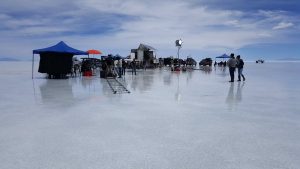
“Another place that bowled me over is Salar de Uyuni in South Bolivia. It’s a stunning white salt pan. We shot Telusa Telusa, a song for Telugu film Sarrainodu there,” he says. Among the many beautiful places he has taken Indian cinema to is the Red Sea Beach in China where the song Pookkalae Sattru Oyivedungal from the Tamil movie I was shot.
“India’s regional film industry makes three times the number of films Bollywood makes, but outside India, we are all known under the banner of Bollywood,” says Ramji, “Almost always, locals welcome us enthusiastically. They would come to watch our actors dancing on the streets.”
Now, the ‘dance on the street’ trope is slowly getting outdated, and Indian filmmakers fly overseas for far more complicated tasks. For one, the Vivegam shooting in Bulgaria involved high-octane stunt sequences.
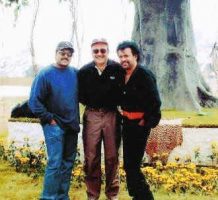
ramji
Many portions of Baahubali and Shivaay were shot in the snow-covered Balkan mountains in Bulgaria. “After successfully completing Baahubali, I became confident about Bulgaria’s potential to be an ideal location for Indian films,” he says.
Around that time, he came to know that Ajay Devgn was planning to shoot his Shivaay in Canada, for he wanted a location that had the dark, gloomy ambiance of upper Himalayas.
“Their overseas shoot cost estimate came around Rs 55 crores, which is quite huge. I had an idea, and I went to meet the Shivaay crew and Devgn to propose it to them. I met his team first, and told them that it was not wise to go ahead with their Canada plan while there were more economic and more picturesque options. Devgn, who was listening to our conversation from the other room, joined our discussion. I told him that the entire Canada portion of Shivaay could be shot in Bulgaria at one fourth the estimated cost.” After a recce to Bulgaria, Devgn was totally impressed.
The word got around, and soon, Rohit Shetty approached Ramji for his Dilwale. “For Dilwale, we shot in Bulgaria and Iceland for 70 days.”
Unlike a regular location scout, Ramji doesn’t always look for the locations that the script demands. There were numerous times when directors changed their script to accommodate the places that Ramji suggested. The song, Kilimanjaro, in Shankar’s Enthiran, is one such. “They had initially planned it as a Samba dance. Later, we found this place, Machu Pichu, an ancient Incan citadel in the Andes Mountains in Peru, and Shankar readily changed his initial plan. Similarly, we chanced upon this place – Lençóis Maranhenses National Park in North Eastern Brazil – where the other song in the film, Kadhal Anukkal, was shot.
In May 2017, he took the first Indian film crew to Macedonia, a country that has a rich ethnic heritage. Filmmaker Atlee’s Vijay-starrer Mersal, was shot in the southeastern European country. Reportedly, Mersal will benefit from the cash rebate scheme for film and TV projects that was introduced by the Macedonian government in 2015. Iceland too, offers 20 per cent rebate to foreign productions that shoot movies and TV programmes in the glacier country.
*****
Recommended
Of course, things wouldn’t fall in place perfectly every time, he says. “There could be customs and border issues. Sometimes, equipment could be confiscated, like what happened during the shoot of Selvaraghavan’s Irandaam Ulagam. We travelled to Uzbekistan. When we landed at the airport, they didn’t allow us to carry our camera and other shooting equipment. Ever since that incident, I never recommend Uzbekistan to anyone. We filmed three movies there, but not anymore.”
In any case, there are challenges, he says. “At first, I would consider myself lucky if I could do one film in two years. Now, I am doing three movies a month. My job is to do things new every time. It is not easy.”
*****
The Natarajan Ramji interview is a Silverscreen exclusive.
